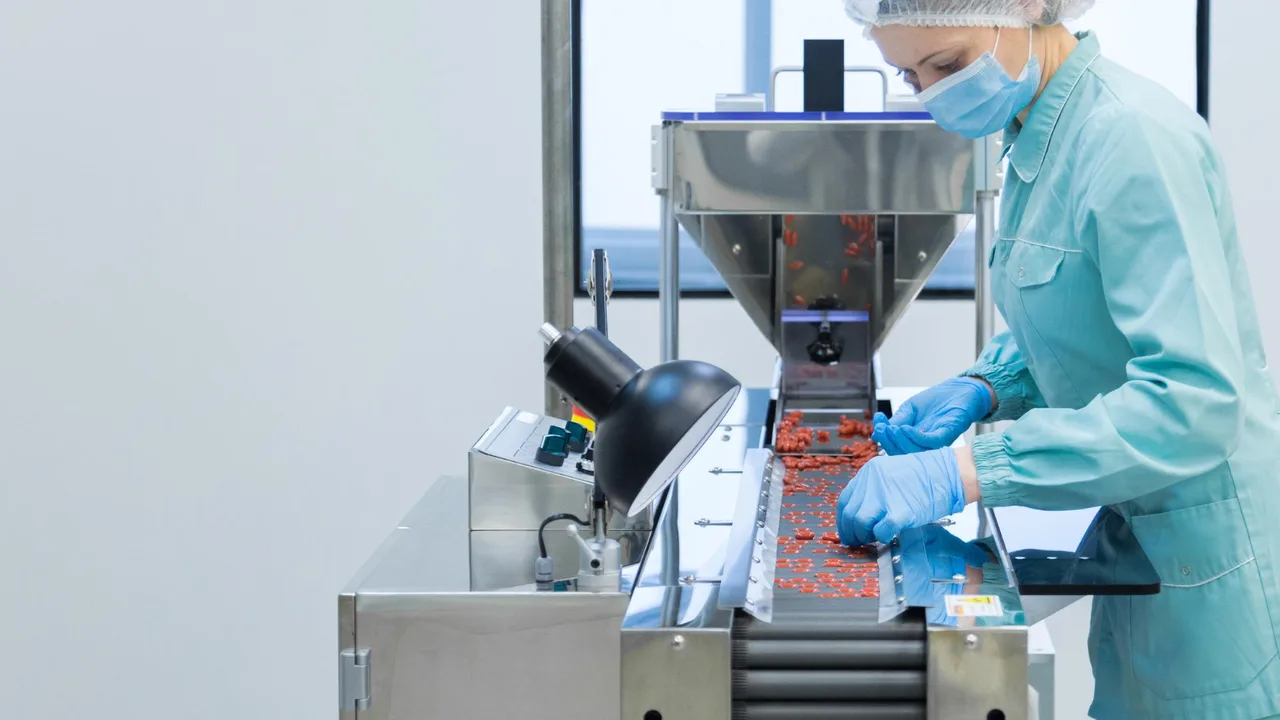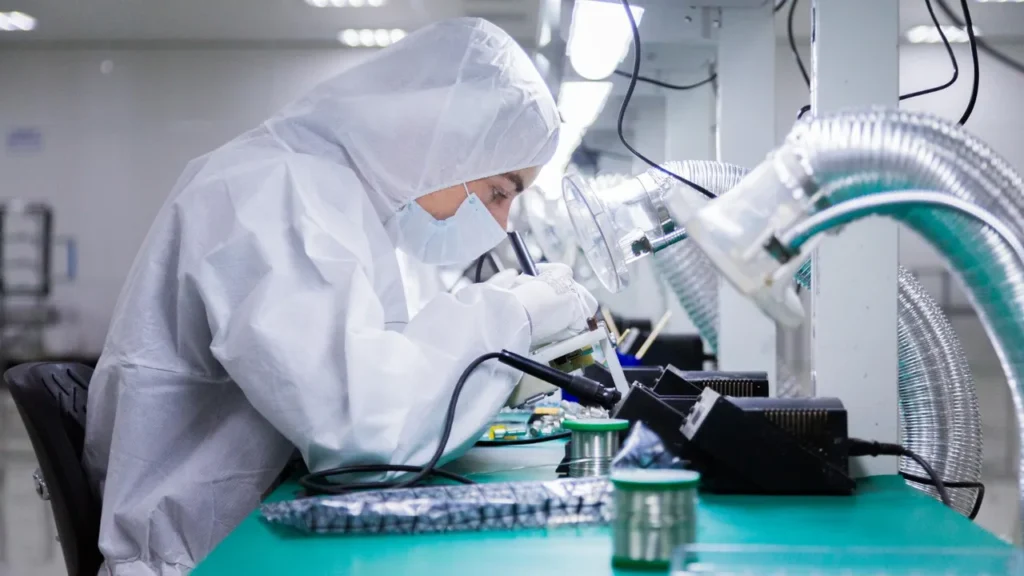In 2025, the semiconductor manufacturing industry is entering a new era of global expansion. Driven by the explosive demand for chips in artificial intelligence, electric vehicles, smart devices, and automation systems, governments and companies around the world are investing billions to strengthen production capacity. The rapid development of chip plants and high-tech cleanrooms marks a turning point in how modern economies prepare for the digital future.
After years of supply shortages and geopolitical pressures, 2025 has become the year of strategic recovery and technological transformation for the semiconductor sector. Countries are not only competing for innovation leadership but also ensuring a more resilient, sustainable, and diversified production ecosystem. This article explores the key global projects, technological innovations, and sustainability goals driving the next wave of semiconductor growth.
The Rising Demand for Semiconductor Manufacturing
The demand for chips continues to surge across industries. The boom in AI-driven applications—from cloud computing to autonomous vehicles—has put enormous pressure on semiconductor manufacturing capacity. Every device, from smartphones and data centers to industrial automation equipment, depends on microchips. This dependence has transformed semiconductors into the backbone of the global economy.
According to recent market forecasts, global semiconductor sales are expected to exceed USD 600 billion in 2025. The biggest growth drivers include the expansion of electric vehicle production, renewable energy systems, and next-generation communication networks (5G and 6G). Governments are responding with national policies to localize production and reduce reliance on foreign supply chains, especially after the 2020–2022 global chip shortage.
Countries such as the United States, China, South Korea, Japan, and members of the European Union are leading the race to build new chip plants. This surge is not only about capacity but also about maintaining technological sovereignty—an increasingly important concept in a world where access to advanced chips defines national competitiveness.
Major Expansion Projects Around the World
United States: CHIPS Act and Domestic Growth
The U.S. government’s CHIPS and Science Act has catalyzed one of the most ambitious industrial expansions in recent history. Companies such as Intel, TSMC, Samsung, and Micron are building new mega-fabs across states like Arizona, Texas, and New York. The goal is clear: restore America’s position as a leader in semiconductor manufacturing and reduce dependence on imports from Asia.
Intel’s Arizona fabs, for example, represent over USD 30 billion in investment and aim to create thousands of skilled jobs. Meanwhile, TSMC’s expansion in the U.S. signals a deepening collaboration between American and Asian chipmakers. These facilities are designed with next-generation cleanrooms that allow extreme ultraviolet (EUV) lithography for advanced nodes of 3nm and below.
Asia-Pacific: The Manufacturing Backbone
The Asia-Pacific region remains the epicenter of global semiconductor production. Taiwan’s TSMC, South Korea’s Samsung, and China’s SMIC dominate wafer fabrication. Together, they account for more than 70% of global chip output. In 2025, massive investments continue to pour into chip plants across Malaysia, Japan, and Vietnam as companies diversify manufacturing footprints to reduce geopolitical risk.
For example, Malaysia’s Penang region has attracted global semiconductor suppliers building new assembly and test facilities. Japan’s government, in partnership with private investors, is supporting the launch of Rapidus, a new chip venture aiming to produce advanced logic chips domestically by 2027. This momentum underscores Asia’s enduring role as both a technological hub and a logistics powerhouse.
Europe: Strengthening Semiconductor Sovereignty
In Europe, the EU Chips Act seeks to double the region’s share of global semiconductor manufacturing from 10% to 20% by 2030. Germany, France, and Italy have become focal points of this effort. Intel is constructing a multi-billion-dollar fab in Magdeburg, while STMicroelectronics and GlobalFoundries are expanding in France to meet growing demand from the automotive and renewable energy sectors.
These initiatives not only secure Europe’s industrial autonomy but also stimulate cross-border collaboration in R&D, design, and packaging technologies. The European strategy reflects a broader shift toward balancing economic security with innovation leadership.
Cleanroom Innovations and Production Efficiency

At the heart of every semiconductor manufacturing facility lies the cleanroom — an environment so meticulously controlled that even microscopic particles can disrupt the process. Maintaining cleanrooms is critical for precision in lithography, etching, and wafer inspection. As global demand grows, companies are turning to smarter, more modular cleanroom designs to enhance efficiency and sustainability.
Next-generation cleanrooms incorporate advanced airflow systems, real-time contamination sensors, and AI-based monitoring tools that can adjust conditions instantly. Some companies are experimenting with modular cleanrooms, which can be rapidly assembled and reconfigured to suit different fabrication stages.
| Cleanroom Type | Features | Benefits |
|---|---|---|
| Traditional Cleanroom | Fixed layout, high energy usage, manual monitoring | Stable environment but costly to maintain |
| Modular Smart Cleanroom | Flexible structure, AI sensors, optimized airflow | Lower energy consumption, faster installation |
Companies like ASML and Applied Materials have also developed new equipment designs compatible with smaller cleanroom footprints, allowing more compact yet high-performance production lines. These improvements reduce both operating costs and environmental impact, supporting a more sustainable future for global semiconductor manufacturing.
For readers interested in technical details about cleanroom classifications and particle control standards, you can refer to this reference source for further information.
Supply Chain Resilience and Localization
The semiconductor supply chain is one of the most complex networks in modern manufacturing. A single microchip may depend on materials, tools, and processes from more than 20 countries. The global shortage of 2021–2022 exposed the fragility of this interdependence, prompting nations to rethink how they approach semiconductor manufacturing and logistics.
In 2025, the focus has shifted toward localization. Governments are offering tax incentives, subsidies, and partnerships to attract chip plants closer to home. The objective is to minimize disruptions from trade disputes or transportation bottlenecks. For instance, the United States and Japan are reinforcing their cooperation on critical chip materials such as photoresists, silicon wafers, and rare gases like neon and argon.
Meanwhile, China continues to develop its domestic semiconductor ecosystem, expanding local suppliers of lithography, etching, and testing equipment. Southeast Asian countries, including Vietnam and Malaysia, are emerging as vital backup nodes in the supply chain, offering a balance between cost efficiency and manufacturing capability.
This push for resilience has also encouraged digitalization throughout the supply chain. AI-driven forecasting, blockchain traceability, and advanced analytics are helping companies predict potential shortages, optimize inventory, and maintain transparency across global partners.
Workforce, Automation, and Smart Factories
As semiconductor manufacturing grows more advanced, so too does the demand for skilled labor. Engineers specializing in nanotechnology, robotics, and process control are in short supply. To bridge this gap, many chip plants are adopting higher levels of automation and robotics to handle precision tasks with consistency.
Smart factories are becoming the new norm. Using a network of interconnected machines, sensors, and data platforms, these facilities monitor production in real time. Artificial intelligence ensures that parameters such as temperature, humidity, and contamination levels remain perfectly stable inside cleanrooms. When combined with predictive maintenance, smart automation can reduce downtime by up to 30% and improve yield rates significantly.
Training and education are equally critical. Leading chipmakers are partnering with universities to create semiconductor training programs and scholarships. These initiatives are building the next generation of engineers who will sustain the industry’s innovation momentum well into the 2030s.
Environmental Sustainability in Semiconductor Manufacturing
Despite its technological sophistication, semiconductor manufacturing faces significant environmental challenges. Producing a single chip requires vast amounts of water and energy, along with the use of chemicals and rare gases. As global awareness of climate impact increases, the industry is under pressure to adopt greener practices.
Companies are investing heavily in sustainable solutions, including cleanroom energy recovery systems, closed-loop water recycling, and renewable energy integration. For instance, TSMC’s advanced fabs in Taiwan now operate with over 30% renewable power and have reduced water consumption per wafer by 15%. Intel has pledged to achieve net-zero greenhouse gas emissions by 2040, while Samsung is advancing eco-friendly packaging initiatives across its chip plants.
Green cleanroom technologies—such as low-particulate airflow systems and eco-filtration—are also gaining attention. These innovations cut down energy use while maintaining the ultra-clean conditions essential for advanced chip fabrication. The combined efforts are shaping a more environmentally responsible generation of semiconductor production facilities.
Challenges Ahead in 2025 and Beyond
While optimism remains strong, the road ahead for semiconductor manufacturing is far from smooth. The industry continues to face challenges in raw material availability, geopolitical stability, and cost management. Access to high-purity silicon, neon gas, and advanced photolithography equipment remains limited, often concentrated in a few countries.
Geopolitical tensions—particularly between the United States and China—add layers of uncertainty to global collaboration. Export controls, tariffs, and technology restrictions can disrupt both research and production pipelines. At the same time, competition for subsidies and talent intensifies, making it harder for smaller firms to survive in a capital-intensive market.
However, there are also clear opportunities. The rise of AI chips, quantum processors, and edge computing devices will redefine design and production paradigms. As cleanrooms evolve to handle new materials like gallium nitride and silicon carbide, the frontier of what’s possible continues to expand. By 2030, the global semiconductor industry is projected to surpass USD 1 trillion, transforming not only technology but also global economic structures.
Conclusion
The year 2025 marks a pivotal chapter in the evolution of global semiconductor manufacturing. The industry has learned valuable lessons from past disruptions and is now embracing resilience, innovation, and sustainability as its guiding principles. From new chip plants in the United States and Europe to the continued strength of Asia’s production network, the entire ecosystem is aligning toward a smarter, greener, and more distributed future.
As nations invest in local capacity and companies push the boundaries of cleanroom technology, the semiconductor industry is set to remain the foundation of digital transformation for decades to come. In many ways, the progress achieved today will define how humanity powers its devices, connects its systems, and builds the intelligent world of tomorrow.



